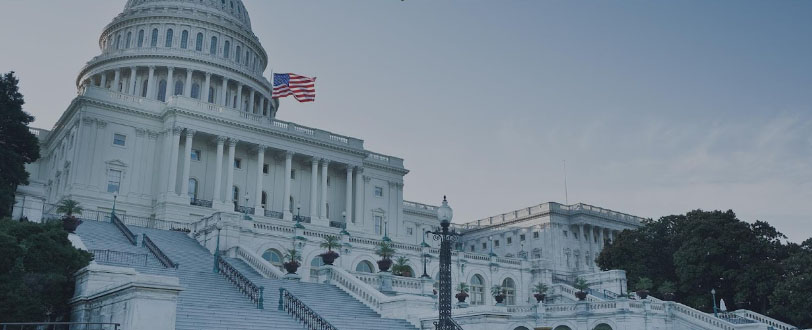On Sept. 9, 2024, the U.S. Departments of Health and Human Services (HHS), Labor (DOL), and the Treasury (IRS) (collectively, the Departments) released new final rules implementing the Mental Health Parity and Addiction Equity Act (MHPAEA). The final rule updates the way the Departments determine whether health plans treat mental health and substance use disorder (MH/SUD) benefits differently than medical and surgical (M/S) benefits. In short, it specifies how health plans must analyze nonquantitative treatment limitations (NQTLs) for both types of benefits and requires plans to remedy any disparity. The rules significantly impact employers and their responsibilities relating to group health plans.
The primary area of focus in the final regulations is the comparative analyses requirement for group health plans’ nonquantitative treatment limitations. NQTLs are the requirements in a group health plan other than financial requirements or treatment limits that impact access to MH/SUDs. They include medical management and medical necessity standards, provider admission to network guidelines and methods for determining usual, customary, and reasonable charges for MH/SUDs.
The primary area of focus in the final regulations is the comparative analysis requirement. As background, the MHPAEA was amended by the Consolidated Appropriations Act, 2021 (CAA, 2021) to add a requirement for employers to annually perform and document a comparative analysis of their group health plans’ nonquantitative treatment limitations. NQTLs are the requirements in a group health plan other than financial requirements or treatment limits that impact access to MH/SUDs. They include medical management and medical necessity standards, provider admission to network guidelines and methods for determining usual, customary, and reasonable charges for MH/SUDs. Many violations of the MHPAEA relate to the NQTLs and are a particular focus of enforcement of the DOL.
The Final Rules
- Prohibit greater restrictions on access to MH/SUD benefits as compared to M/S benefits.
- Codify the comparative analysis requirement and require plans and issuers to collect data to assess the impact of NQTLs on behavioral health access as compared to M/S benefits and to remedy any disparities.
- Prohibit plans and issuers from using discriminatory information, evidence, sources, or standards that systematically make it harder to access MH/SUD benefits as compared to M/S benefits when designing NQTLs.
- Add a meaningful benefit requirement requiring that a plan providing any benefits for a MH condition or SUD in any benefits classification must provide meaningful benefits for that condition or disorder in every classification in which meaningful M/S benefits are provided. The Final Rules: Final Rules under the Mental Health Parity and Addiction Equity Act
- Define M/S benefits and MH/SUD benefits with reference to generally recognized independent standards of current medical practice rather than state guidelines.
- Sunset the ability of self-funded non-federal governmental plans to elect to opt out of compliance with the MHPAEA.
To prepare for open enrollment, employers with HDHPs should:
- Review their plan’s deductible and out-of-pocket limits to ensure they comply with the IRS’ limits for 2025;
- Confirm the plan will not pay benefits for telehealth before the annual minimum deductible has been met; and
- Communicate any plan changes to employees.
Comparative Analysis Content Requirements
Employers generally rely on their insurance carrier in fully insured plans and the third-party administrator (TPA) or administrative services only (ASO) provider in a self-insured plan for compliance with the MHPAEA’s comparative analysis requirement establishing compliance of the plan’s NQTLs.
The comparative analyses must be made available to the Departments as well as state regulators and plan members upon request. Because of the short time frames in which to respond, it is important that employers ensure the comparative analyses are prepared each year in the event their group health plan is selected for review. At a high level, the comparative analysis must include:
- A description of the NQTL, including identification of benefits subject to the NQTL.
- Identification and definition of the factors and evidentiary standards used to design or apply the NQTL.
- A description of the way factors are used in the design or application of the NQTL.
- A demonstration of comparability and stringency, as written.
- A demonstration of comparability and stringency, in operation, including the required data, evaluation of that data, explanation of any material differences in access, and description of reasonable actions taken to address such differences.
- Findings and conclusions. The comparative analysis requirement has been in effect since Feb. 10, 2021.
Comparative Analysis Request and Review Process
The final rules also identify the steps the Departments will follow to request and review a plan’s or issuer’s comparative analysis of an NQTL.
- A group health plan will have 10 business days to respond to the Department’s request for a plan’s comparative analysis.
- If the comparative analysis is insufficient, the group health plan will have an additional 10 business days to resubmit.
- If the relevant Department makes an initial noncompliance determination, the group health plan has 45 calendar days to specify the actions it will take to comply and provide additional comparative analysis.
- If the Department makes a final determination of noncompliance, the group health plan or issuer must notify all participants, beneficiaries, and enrollees in the plan or coverage not later than seven business days after the noncompliance determination. The final rules provide the content for the notice and require the notice be provided to the applicable Department conducting the review and any relevant service providers and fiduciaries to the group health plan.
Plans and issuers must make a copy of the comparative analysis available upon request to any applicable state authority, or plan participant, beneficiary, or enrollee who has received an adverse benefit determination related to MH/SUD benefits, and to participants and beneficiaries in ERISA plans at any time.
Applicability Dates and Employer Action Items
The final rules generally apply to group health plans on the first day of the first plan year beginning on or after January 1, 2025. However, the meaningful benefits standard, the prohibition on discriminatory factors and evidentiary standards, the relevant data evaluation requirements, and the related requirements in the provisions for comparative analysis apply on the first day of the first plan year beginning on or after January 1, 2026.
Until the applicability date, employers should take the following steps:
- Work with your employee benefits advisors to ensure that your group health plans are in compliance with the existing requirements under the MHPAEA, paying particular attention to NQTLs. The DOL provides a useful list of warning signs for common noncompliance items relating to a group health plan’s NQTLs.
- Confirm that your group health plans have robust comparative analyses meeting the current guidelines. The Departments’ MHPAEA FAQs under existing regulations clarify that a general statement of compliance with the MHPAEA for NQTLs, coupled with a conclusory reference to broadly stated processes, strategies, evidentiary standards, or other factors is insufficient to meet the CAA requirement. Many employer comparative analyses have been rejected as insufficient.
- Confirm that your services agreement with the ASO or TPA for self-insured plans requires preparation of the comparative analysis or, at a minimum, an agreement for cooperation in the preparation of the comparative analysis. The TPA or ASO is not directly responsible under the law for the comparative analysis (the employer or sponsor is), so if this is not a service provided, be sure to find a third-party vendor. Fully insured plans will generally be able to rely on the issuer.
- Gather supporting documents with your ASO or TPA for the analysis and conclusions of the NQTL comparative analysis, including any documents and other information relevant to the factors used to determine the application of an NQTL and the evidentiary standards used to define the factors identified.
- Be educated about the MHPAEA and your group health plan’s responsibilities. The DOL offers an MHPAEA SelfCompliance Tool to assist employers with compliance in this area, including a section on NQTLs that outlines a process for conducting the comparative analysis.
SOURCE: United Benefit Advisors (UBA)







